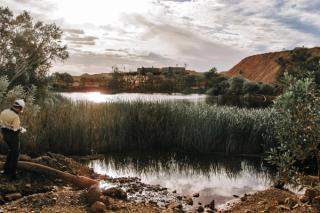Site wide groundwater environmental evaluation
- Client Name
- Confidential
- Location
- Queensland, Australia
- Ecology
- Hydrogeology
- Hydrology
- Land quality & remediation

Challenge
SLR was engaged by the client to provide consulting services to prepare a site contamination assessment focusing on groundwater impacts from their processing operations. This task is referred to as the Site Wide Groundwater Environmental Evaluation (EE) in response to a Notice from the Queensland Department of Environment and Science (DES), due to be delivered to the Department in December 2020.
The DES Notice requires the client, through SLR to:
- Identify the dominant hydrogeological features across the site
- Identify all sources, causes and extents of contamination across the site
- Assess the impacts on the receiving environment and all identified Environmental Values (EVs)
- Identify and describe the pathways and mechanisms for the release and transport of contaminants to groundwater. The scope includes defining current lateral and vertical geographical extents of contamination and undertake solute transport modelling to assist in determining long term contaminant fate
- Identify a preferred engineering option(s) for both the remediation of identified impacts to the receiving environment and measures to prevent or limit future impacts.
Solution
The early phases of the EE project involved a range of desktop and field studies including hydrogeology, hydrology, land quality, and ecology. Completed field studies include surface and groundwater sampling, soil and sediment sampling, aquatic ecology, flora and fauna surveys as well as planned drilling investigations. These works, combined with desktop studies aim to develop a thorough understanding of the interactions between site infrastructure (as sources of contamination), groundwater flow systems and the receiving environments (human and ecological).
The project will then move into a risk assessment phase to assess potential for risk to human health and the environment. The results of this phase of assessment, including collaborating with the client and regulators, will aim to quantify issues and identify remediation options and concept engineering designs.
Impact
The delivery of a consolidated Environmental Evaluation Report is due in December 2020.